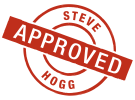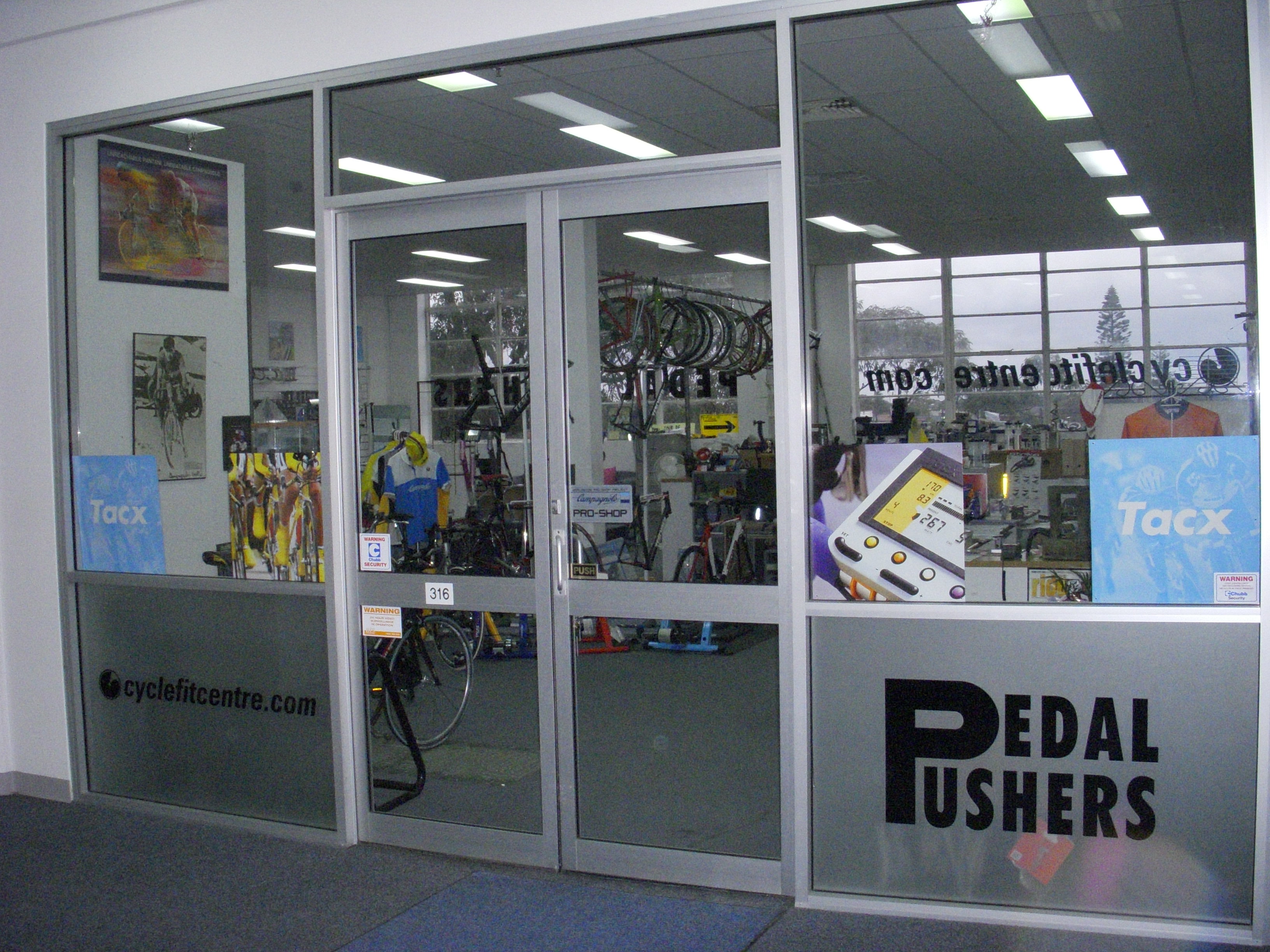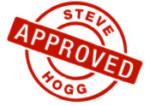By Steve Hogg
Meet a gentleman I’ll call JH. JH is a triathlete who came in complaining of chronic pain in the lower back, right hamstring origin, right tricep, right upper back and left hand while riding. He’s been competing in tri’s which has helped him lose a substantial amount of weight, but pain in the areas mentioned is a constant companion. JH feels it is time to do something about his situation. He had been fitted elsewhere previously and was not happy with the result.
Interview Q&A
JH spends 3 – 10 hours a week on the bike and 10 – 15 hours a week running, swimming or at the gym. He has had surgery to his left hip as a 14 year old to remedy a slipped femoral epiphysis. The surgery was only partially successful and left him with left leg that is effectively 17 mm shorter than the right leg due to the changed relationship between the top of the femoral head and the femoral neck. To work around what he sees as the fallout from this, JH uses a 30 mm pedal extender on his left pedal axle.
JH uses a left running shoe with a tapered build up. The build up is 20 mm at the heel and tapers down to 9 mm underneath the forefoot. Running presents no problem for him at all. The only other matters of note to come out of the interview are that he had a fractured right forearm as a child and had a heavy blow on his right patella. Neither of these injuries cause him any problem at this time.
Off Bike Assessment
JH’s left foot has a rear foot and forefoot in the same plane, which while not rare, is unusual in a good way. In contrast his right foot has a twist in the long axis between rear foot and forefoot of 15 degrees. No evidence of hip rotation in normal standing posture on the left and minor internal rotation only on the left hip. Both feet are the same length and have stable arches under load. His right AC joint is 15 mm higher than his left and this right iliac crest is 40 mm higher than his left side. He stands with his left hip forward of his right and is moderately left cerebellum (right side of body) motor control dominant. JH’s left sacroiliac joint moves freely whereas his right sacroiliac joint has zero movement. He extends his spine very well and is one of the rare clients who is not tight in the hip flexors.
Before going further, I applied some of the methods we use to moderate the difference in iliac crest heights down to approximately 15 mm, which is what it should be, given the difference in leg length. I also freed up the right sacro iliac joint which in JH’s case was surprisingly easy.
Other notable observations about his function is that he has zero ability to internally rotate the left hip but good ability to do so on the right side. This is an issue because as a cyclist leans forward and lowers their torso, each hip ‘ball’ has to internally rotate within the hip socket (acetabulum) to allow this. With nil ability to internally rotate the left hip, JH’s left knee will stick out much further from the centre line than his right knee as this is the only way his body can compensate for the lack of internal hip rotation on that side.
His hip flexion range of motion is also very poor. This becomes an issue when combined with a low torso position, as once the knees come up high enough, each hip in turn will be lifted off the seat. JH is also very tight generally in the lower back.
I then had JH perform some stability tests at which he was poor overall.
Somewhere amongst this I had a good look at JH’s running shoes. The 20 mm tapered build up sandwiched between the sole and the upper was a touch too high so I fitted a 3 mm heel lift to his right running shoe which gave him an ideal difference between the two.
On Bike Assessment
The three videos below sum up JH on the bike.
This is the right side view prior to any changes. There is too much unnecessary upper body movement, in part because he is pushing too big a gear, and his overall position is not great. If you look closely you will note that the right knee accelerates a touch just before bottom dead centre which indicates that his seat is slightly too high.
On this side there is less upper body movement because JH is not pushing as big a gear as hard as he was in the first video. On this side it is not hard to see that he is overextending the left leg a LOT!
It would be easy to think that the difference in technique and extension between left and right legs could be accounted for by the uncompensated difference in leg length. This is in part the case but much more of this is down to JH’s inability to sit squarely on the seat. Also note how much further out his left leg tracks from the centre line of the bike compared to the right leg. JH’s basic issue is that he has so little hip flexion on the left side that as his left knee comes up it pushes him down on the right side. This is compounded by the relatively low torso position demanded by his tri bike. From what I could see, ALL of JH’s chronic pain issues are caused by a combination of zero ability to internally rotate the left hip combined with a very limited range of hip flexion in the left side.
So after seeing all of the above I set to work. It was clear that most or all of JH’s chronic pain issues resulted from his sitting asymmetrically on the bike and producing most of his power with his right leg and very little with his left leg. I dropped his seat substantially and fitted a 15 mm shim to the underside of the left cleat. It was clear that the shim was too much because it forced his left knee higher. Combined with the lower seat height it actually made things worse. I
I tried a lot of other things including varying the length of the pedal extender but in the end, put it back to the original 30 mm and gradually reduced the left cleat shim to 6 mm. I then fitted a left crank of 170 mm while leaving the right crank arm at 175 mm. I then shot the footage below.
You can see that the left leg does not track nearly as far out from the centre line as in the original rear view video but he still leans markedly to the right. In short he is a better version of the asymmetric rider you saw in the first 3 videos. In my opinion, not better enough . Yes, I could fit a 165 mm or shorter crank on the left, but while large differences in crank length may solve the on seat symmetry issue, a ‘fix’ like that always exacts a cost in the sense that it creates muscle imbalances between left and right sides over time. In turn these cause other, long term problems. I called a halt to the fitting even though I had not yet got to foot correction or even begun to tackle his base bar and aero bar position.
I had a heart to heart with JH. I have a problem with helping people hurt themselves and is best explained by the story about a past fitting client that I related to JH.
Maybe 10 or 11 years ago I had a first time client with Perthes Disease, which is a malformation of the femoral head (ball) where it sits within the acetabulum (socket of the hip joint). He wanted to compete in an Ironman triathlon. I told him he was crazy and that while I didn’t doubt for a moment that he could do it, the cost to his body would be high and probably result in permanent damage. His reply was along the lines of “Why do people keep telling me what I CAN’T do? I’m going to do the race with or without you so make a choice now; are you going to help me or not?”
I admired his spirit and agreed to help. The client then completed the Ironman and post race became fairly serious about cycling in general. The cost of all the training and racing over the subsequent 7 or so years was that his malformed femoral heads wore right through the acetabulum on both sides. This required extensive surgery and as I write this 3 years after the surgery, he still cannot ride normally and walking isn’t a lot of fun either. While I believe he was an adult and made an informed and adult decision, I have decided that in the future I will not aid those who don’t know when enough is enough when what they want from me will only allow them to damage themselves further.
I explained this to JH and he understood my reasoning but was not happy about it. Exercise, in particular triathlon, has been the means by which he has lost 50 kg in weight ( he looks like an athlete now) and I suspect that plays a part in his disappointment. I suggested he take up mountain bike racing as a competitive outlet because as we found while he was on his bike on the trainer, when he sits as upright as is needed to ride an mtb, he sits squarely on the seat.
I can only hope JH heeds this advice, puts the tri bike on the market and starts testing riding a few mtbs. If he does, I’ve offered to fit him to an mtb free of charge.



